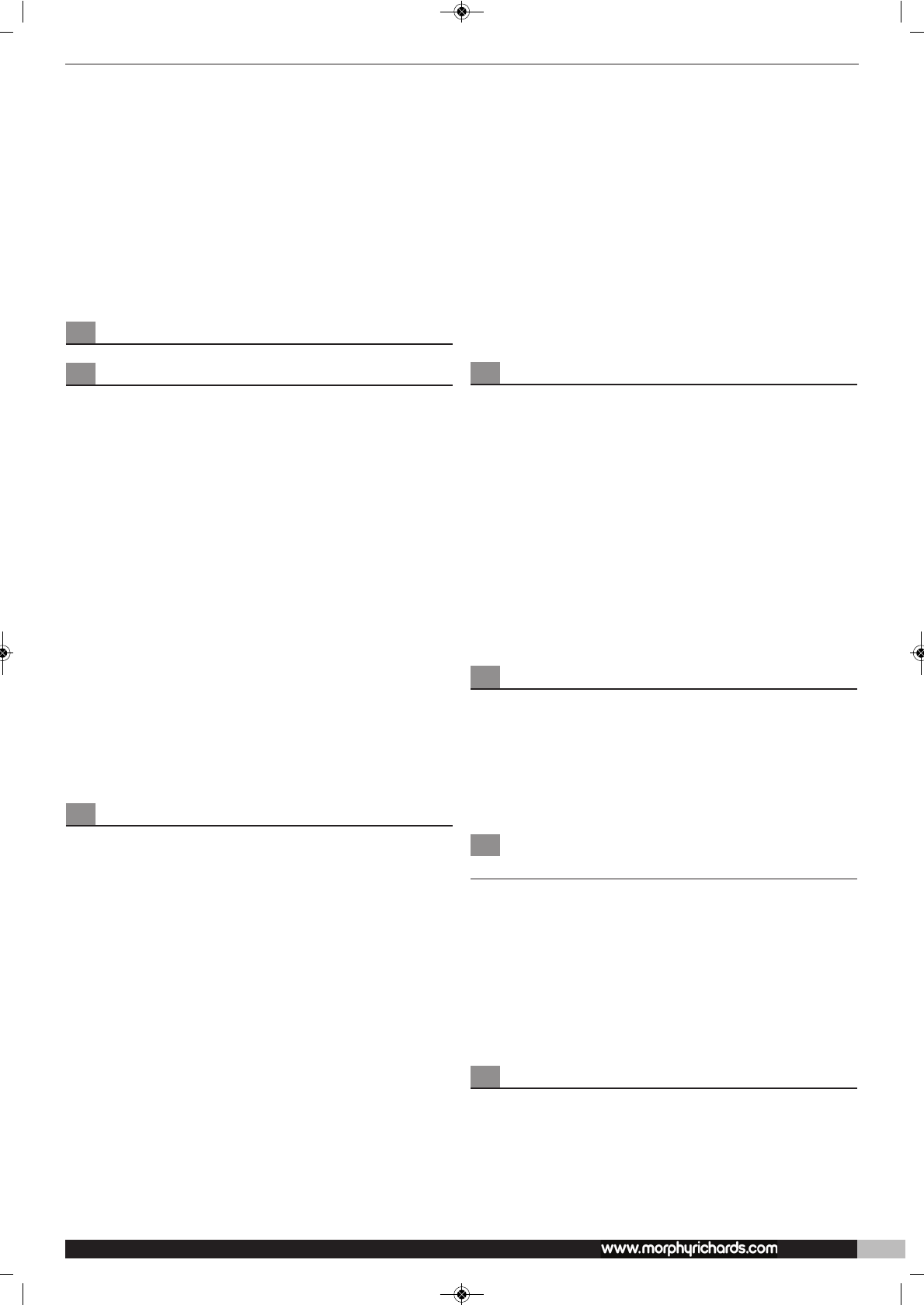
25
For details of other Morphy Richards products, please see our website:
Question 18
Can I premix the yeast with water?
No, the yeast must be kept dry and put into the Baking Pan last,
above the flour. This is especially important when the delay
timer is being used.
Question 19
Why is there a large hole in the base of the bread?
This hole has been created by the Drop Down Kneading Blade.
Sometimes this hole is larger than normal. This is because the
dough has rested to the side of the Drop Down Kneading Blade
after the second kneading cycle - normal with breadmakers. You
could position the dough evenly in the base of the Baking Pan.
Troubleshooting
Bread Sinks in the Centre
Too much liquid or liquid too warm.
Measure ingredients accurately. Use liquids at temperatures
between 21°C and 28°C.
Salt was not added, causing bread to over rise and
collapse.
Measure ingredients accurately.
Too much yeast was added.
Measure ingredients accurately, if problem persists, reduce
yeast by 1⁄4 teaspoon.
High humidity and hot ambient temperatures can
cause bread to over rise and collapse.
Bake during the coolest part of the day, Try reducing the yeast
by 1⁄4 teaspoon or use liquids direct from the refrigerator. Do
not use the timer function.
High altitudes can cause the bread to over rise and
then collapse during baking.
Try reducing the yeast by 1⁄4 teaspoon.
Lid is open during baking.
Do not open the Lid during baking.
Bread Did Not Rise Enough
Not enough yeast was added.
Measure ingredients accurately.
Yeast is outdated or inactive.
Never use outdated yeast. Store in a cool, dark place.
Too little sugar was added.
Measure ingredients accurately.
Too much salt was added, reducing the action of the
yeast.
Measure ingredients accurately.
Water was too hot and killed the yeast.
Use liquids at temperatures between 21°C and 28°C.
Yeast has been activated before programme has
started.
Take care that yeast does not come in contact with liquid
before programme has started.
Bread Rises Too Much
High humidity and hot ambient temperatures can
cause bread to over rise.
Bake during the coolest part of the day. Try reducing the yeast
by 1⁄4 teaspoon or use liquids directly from the refrigerator. Do
not use the Timer function.
Too much yeast.
Measure ingredients accurately.
Too much liquid.
Measure ingredients accurately.
Hot liquids accelerated the yeast action.
Use liquids at temperatures between 21°C and 28°C.
Too much flour or not enough salt.
Measure ingredients accurately.
Bread Dry With Dense Texture
Not enough liquid added.
Measure ingredients accurately.
Flour may be past the use by date, or be dry causing
wet/dry imbalance.
Try increasing liquid by 1 tbsp at a time.
Bread Under Baked With Soggy
Centre
Too much liquid from fresh or canned fruit.
Always drain liquids well as specified in the recipe. Water
may have to be reduced slightly.
Large amounts of rich ingredients like nuts, butter,
dried fruits, syrups and grains will make dough heavy.
This will slow down the rising and prevent the bread
from baking through.
Measure ingredients accurately. Never exceed the amounts in
the recipe.
Bread Over Browned
Too much sugar.
Measure ingredients accurately.
Crust colour set too high.
Set crust colour to light.
48324 rev1_x 27/10/2011 12:12 Page 25


















